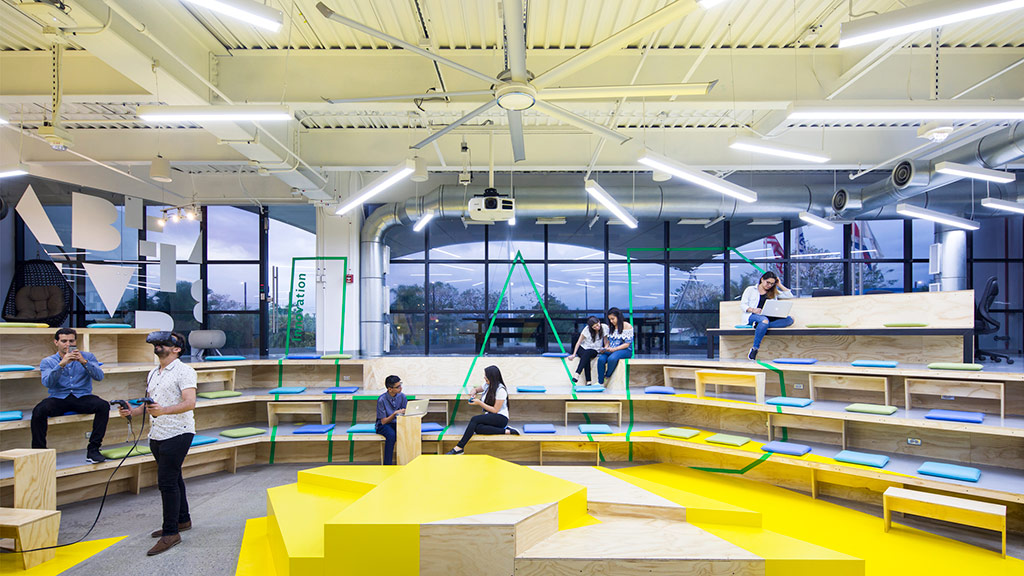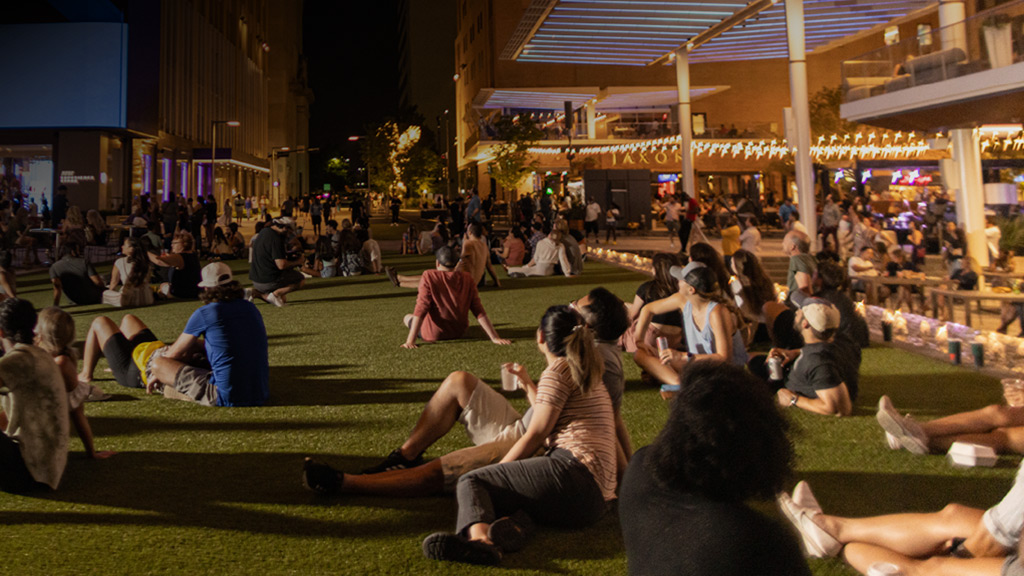Strategy

Standard Chartered Bank Future Workplace, Now.

Verizon Innovation Center Customer Experience Strategy

The Future Experience of Work: Expand the Vision of What’s Possible

Activating the Workspace for Activity-Based Working: DBS Singapore

Global Future Workforce Study

Culture Strategy

Francis House, London HQ

Designing for Mental Wellness

Designing Futures to Fuel Strategic Planning

T-Mobile Headquarters Campus

UBC Faculty of Medicine Work(place) Evolution

Workplace Transformation from Research to Realization

Organon Culture Strategy

Influencing Change for the Future of Work: L’Oréal

Capability Building

Verizon at The Hub

Futures

Desk Reservation Software

Willis Tower Repositioning

Holt Renfrew Sustainable Guidelines

Humanyze

Confidential Technology Client

County of Sonoma Comprehensive County Facilities Plan

Microsoft Scout

Global Financial Advisory Firm

University of California, Office of the President, Workplace Study

San Francisco International Airport, REACH Program
Workplace Strategy
Through our human-centric and data-driven approach to implementing workplace strategies, we ensure that physical space, technology, operations, and HR policies work in concert to support businesses and people. The result is a flexible and hybrid workplace that drives engagement, and is more resilient, adaptable, and inclusive.
Experience Strategy
Experience Strategy is the comprehensive plan that choreographs the user’s journey — including elements of the built environment, digital interactions, service design, activations, communications, and content — and aligns it with a cultural or business purpose to drive impactful design solutions and user engagement.
Change Management
We help clients implement a positive change experience by developing engagement strategies and tailored communications to ensure lasting results. We do this by analyzing organizational readiness and impact of change on diverse audiences, building a change coalition, facilitating leadership alignment, developing messaging frameworks, creating content, and implementing campaigns.
Innovation Strategy
We partner with our clients to foster innovation within their organization using different methods including futures development, capability building, culture activation, and designing transformative experiences. When an organization faces disruption, we reveal the conditions of their business, culture, and environment to design unexpected solutions with real impact.
Real Estate Portfolio Strategy
Our strategists leverage proprietary tools to create real estate portfolio strategies that are efficient, flexible, sustainable, and geared to drive business performance. We gather and analyze qualitative and quantitative data and develop scenarios focused on business strategy alignment and other organizational benefits.
Culture Strategy
Culture is the most powerful driver of organizational success. Our proprietary assessment and culture strategy tools help clients bridge the gap between identifying their values and truly living them. Intentionally activating organizational culture enables employees and businesses to thrive.
Design Guidelines
Our strategists and designers work together with clients to develop, publish, and maintain comprehensive guidelines that communicate process, design, and operational decisions for real estate. Implementation of design guidelines can improve cost savings, streamline project delivery, and align the design experience across a portfolio.
Digital Strategy
Our Digital Strategy team explores how digital interventions amplify brands and experiences, and drive value for our clients. We define opportunities, provide a roadmap for delivery and integration, and offer experience blueprints, journey maps, digital ecosystem diagrams, and content strategy.
Analytics
We balance the science, art, and business of design to help our clients make informed real estate decisions. Our use of spatial data, coupled with demographic information and real estate performance data, enhances our ability to measure and forecast. Partnering closely with clients, we help to accurately interpret information, derive meaning, and develop plausible scenarios for decision-making.
Research
We leverage a diverse, mixed-methods toolkit of research methodologies to generate insights for decision-making and to unlock new, transformational opportunities for our clients and communities. With methods tailored to help clients turn challenges and questions into value-creation strategies and solutions, our diverse network of global experts brings the rigor and process of research alongside the transformative power of design thinking.

Using Experience Strategy to Design What People Truly Want

Strategy: The Unseen Partner for Workplace Design

The Culture of Innovation Diagnostic

2024: The Year of the Intentional Workplace

What About Wednesdays? Planning for the Busiest Day of the Week in the New Hybrid Office.

How the Future of Work Is Influencing Workplace Design

Equity Through Design: How To Improve Hybrid Meetings

10 Considerations for Transitioning Back to Work in a Hybrid World

Magnetizing People & Places Through the Power of Brand

Global Workplace Survey Comparison 2023

3 Ways the Most Innovative Companies Work Differently

Younger Generations Work Differently. What Does This Mean for the Future Workplace?

Prototyping the Future of the Office: A Look Inside NI’s Workplace Pilot Program

Future-Prepping Your Business in an Uncertain World

3 Leadership Disconnects Around Supporting a Culture of Innovation
Strategic experimentation of new hybrid technologies in the workplace can create digital equity.
As organizations look for ways to create parity between the remote and in-person work experience, they can evaluate their goals and user needs to determine the right collaboration tools and processes for their business. Implementing solutions that are simple, cost effective, and consistent will be important.
Customer segmentation and analyses become key tools for creating purposeful work environments.
In a bid to create future-forward work environments, employers are calibrating their research to understand the nuanced needs of different employee populations and business units. Organizations can adopt traditional segmentation tools and analysis and consider a “kit of parts” approach with flexible workplace concepts to tailor environments for different needs.
Early-stage journey mapping will define meaningful places and experiences.
As more organizations seek out unique meaningful places for diverse users, designers will embrace the earliest stages of journey mapping to bring experiences to life in new ways. Clarity at the start — using strategies such as qualitative and quantitative user research and community engagement sessions — can align developers, planners, and other stakeholders around what people really want.


Claudine Frasch

Kevin Rosenstein

Nayan Parekh

Lauren Adams

Michael Adkins

Elaine Asal

Shravan Bendapudi

Raquel Brenes

Elizabeth Brink

Michael Chappell

Jane Clay

Erin Cubbison

Alice Davis

Sonya Dufner

Andrew Garnar-Wortzel

Kerri Henderson

Kevin Katigbak

Kate Kirkpatrick

Wes LeBlanc

Janice Carleen Linster

Kelly Moore

Patricia Nobre

Nikki Rafie

María Paula Sáenz

Johnathan Sandler

Jacob Simons

Alonso Toledo

Arlyn Vogelmann

3 Key Trends for Building an Intentional Workplace in 2024

Here’s What Matters for Optimizing Office Spaces for Today’s Needs

How a Pilot Project Allowed NI To Use Data To Design an Office Tailored for Its Users

Forbes Featured Findings From Gensler’s New U.S. Workplace Survey

Cisco’s New Office Is “a Showcase of the Company’s Technology” and an Example of the Evolving Workplace

Privacy at Work and the Rise of the ‘Quiet Space’

To Attract Workers Back to the Office, New Amenities Are Geared Towards Making the Workplace a Destination, Not an Obligation

Gensler co-CEO Andy Cohen Joins ULI Panel on the Right Path Forward for the Commercial Real Estate Industry

How Companies Are Reimagining Spaces to Support More Social Interaction Among Colleagues

Rethinking the Relationship Between Offices and Cities to Make the Office a Destination

Gensler Co-CEOs Share a Vision For What the Future of the Workplace Will Look Like

Gensler Consulting Leader Kelly Moore Shares Strategies to Engage, Excite, and Empower Employees Returning to the Workplace

CoreNet Global Featured Insights From Gensler Leaders on Transitioning Back to the Office

Gensler’s 2022 U.S. Workplace Interiors Cost Insights Report Offers a Deep Look Into Cost Conditions

Gensler Co-CEO Diane Hoskins on The Rebirth of Workspace Design
